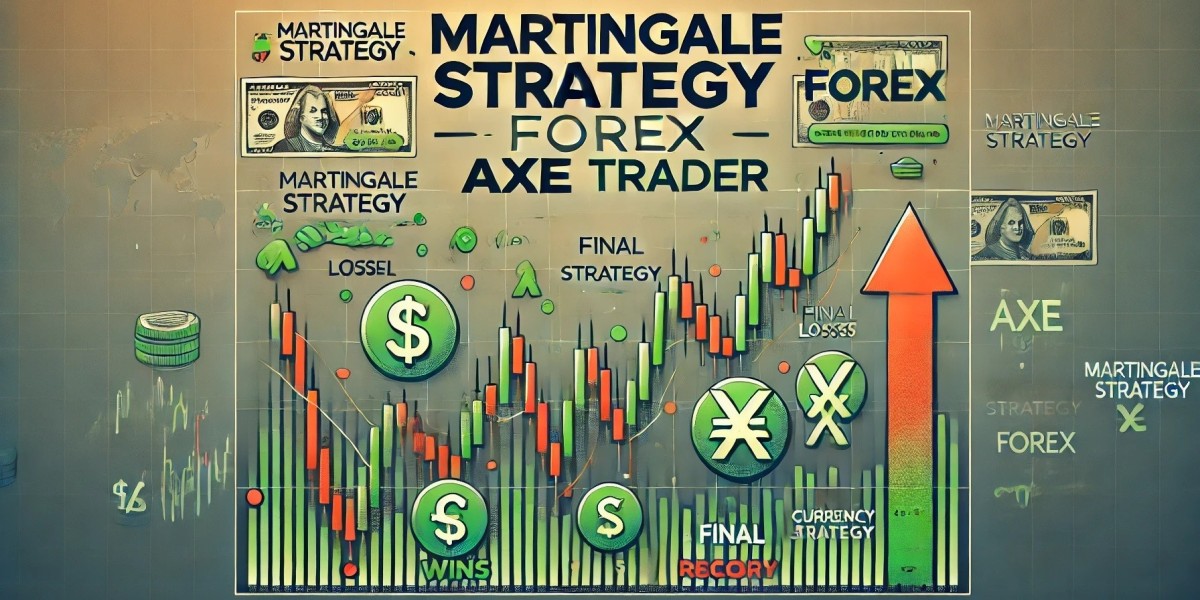
The Martingale strategy forex is one of those trading approaches that catches everyone’s eye due to its simplicity and allure of quick recovery from losses. However, the question that lingers in the minds of many traders is: “Is the Martingale strategy profitable in forex trading?” In this article, we’ll dive deep into how the Martingale strategy works in the forex market, its potential benefits, and significant risks.
Introduction to the Martingale Strategy
Definition of the Martingale Strategy
The Martingale strategy is a betting system where traders double their investment after a losing trade. The core idea is that eventually, you will win a trade, and this single win will recover all prior losses and provide a profit equal to the initial stake.
Historical Background of Martingale Strategy
Originating from the world of gambling in the 18th century, the Martingale strategy was used in simple coin-tossing games. The concept seemed foolproof, as the assumption was that an eventual win would always occur, given enough trials. However, translating this theory to trading, especially in forex, presents unique challenges.
How Does the Martingale Strategy Work in Forex?
The Core Principle: Doubling Down on Losses
The essence of Martingale lies in increasing your stake after every loss. In forex trading, this means increasing the size of your trade every time a loss is incurred, hoping that the next trade will recover all previous losses.
Application of Martingale in Forex Markets
In the forex market, a trader might buy a currency pair like EUR/USD, and if the trade moves against them, they double their position size on the next trade. This pattern continues until a winning trade occurs, theoretically covering all losses.
The Appeal of Martingale Strategy in Forex Trading
Potential for Recovering Losses
The most significant allure of the Martingale strategy is that it offers the potential to recover losses quickly. With one winning trade, all previous losses are wiped out, and the trader can return to profitability.
Large Capital Requirement for Success
For the strategy to work, a trader needs substantial capital. The exponential increase in trade size requires a deep pocket to withstand multiple losses in a row.
Risks Associated with the Martingale Strategy
Exponential Risk Growth
As you keep doubling down, your risk grows exponentially. A few losing trades in a row can deplete your trading account rapidly, which is a significant risk for traders without deep pockets.
Limited Market Movements and Trends
Forex markets can be volatile, but they can also experience prolonged trends. If a currency pair trends against your positions for an extended period, it could result in catastrophic losses.
Advantages of the Martingale Strategy

High Probability of Winning in Short-term Trades
Martingale offers a high probability of achieving small wins in a market with low volatility. In theory, a trader using this strategy will eventually win, as no market moves in one direction forever.
The Lure of Immediate Profit Recovery
The strategy provides an opportunity to recover losses instantly after a win, which is particularly tempting for traders seeking quick fixes.
Disadvantages of the Martingale Strategy
The Threat of Account Wipeout
The most significant disadvantage is the potential for an account wipeout. A streak of losses can deplete an account entirely before a winning trade occurs.
Emotional and Psychological Stress on Traders
The psychological pressure of continually increasing risk can take a toll on traders. Anxiety over potential losses may impair decision-making.
Is the Martingale Strategy Sustainable for Retail Traders?
Capital Requirements for Small Traders
For retail traders with limited capital, the Martingale strategy can be a risky endeavor. A few consecutive losses may wipe out an account that cannot sustain the exponential growth in trade size.
The Role of Leverage in Forex Trading
Leverage amplifies both the potential rewards and risks in forex trading. When combined with Martingale, leverage can lead to substantial losses very quickly.
Examples of Martingale Strategy in Action
Real-life Scenarios in Forex Markets
Imagine a trader buys EUR/USD at 1.1000 with $1,000, and the price drops. Using Martingale, they would double their position each time it drops. If the market keeps moving against them, their positions grow exponentially.
Simulating a Martingale Scenario with EUR/USD
By using demo accounts, you can simulate a Martingale strategy to see how prolonged trends affect your positions. A slow-moving, trending market can highlight the strategy’s flaws.
Alternatives to the Martingale Strategy in Forex Trading
Hedging as a Safer Option
Hedging involves opening positions in opposing directions, allowing you to limit potential losses while waiting for the market to move favorably.
Grid Trading Strategy
The grid trading strategy works by placing orders at regular intervals above and below a set price, providing a more structured approach to risk management.
The Role of Risk Management in Forex Trading
Setting Stop-Losses to Minimize Risk
Risk management is crucial when using any forex strategy. Setting stop-losses can prevent disastrous losses and help traders manage risk better.
Risk-Reward Ratios
Traders should always consider their risk-reward ratio before executing trades. A balanced approach can prevent the temptation to rely on risky strategies like Martingale.
Martingale Strategy in Comparison to Other Forex Strategies
Trend Following
Trend-following strategies work by identifying and riding market trends, which can be more predictable and less risky than Martingale.
Scalping and Day Trading
Short-term strategies like scalping trading strategy and forex day trading focus on making many small trades throughout the day, without doubling down on losses.
How Institutional Traders Approach Risk with Martingale
Insights from Hedge Funds and Investment Banks
While hedge funds and institutional traders may use versions of the Martingale strategy, they usually avoid its pure form due to the high risks involved.
Why Large Institutions Avoid Pure Martingale Strategies
Large institutions manage billions and have strict risk management protocols, making them avoid strategies that require exponential capital increases.
Can the Martingale Strategy Be Combined with Other Strategies?
Pairing with Fundamental Analysis
By combining the Martingale strategy with fundamental analysis, traders can make more informed decisions and avoid doubling down during poor market conditions.
Using Technical Indicators to Support Martingale
Technical indicators like moving averages or RSI can be used to identify trends and help refine entry points when using Martingale.
Is the Martingale Strategy a Good Fit for Forex?
Weighing the Pros and Cons
The Martingale strategy has its place in forex trading, but it is not for the faint-hearted. It requires a significant amount of capital and nerves of steel to handle potential losing streaks.
Final Thoughts on Long-Term Viability
While Martingale may work in theory, in the real world, forex trading demands better trading risk management, and relying on this strategy alone could lead to significant losses.
Frequently Asked Questions (FAQs):
Is Martingale Strategy Legal in Forex Trading?
Yes, the Martingale strategy is legal in forex trading. However, some brokers may discourage or limit its use due to the risks involved.
Can You Use Martingale with a Small Account?
It’s not advisable. A small account may not withstand the multiple losses required to recover using the Martingale strategy.
How Does Leverage Impact the Martingale Strategy?
Leverage can amplify both the gains and losses in the Martingale strategy, making it even riskier for traders with small accounts.
Are There Better Alternatives to the Martingale Strategy?
Yes, strategies like hedging, trend following, and grid trading are often considered safer alternatives with better risk management.
Can Beginners Use the Martingale Strategy?
Beginners are generally discouraged from using the Martingale strategy due to its high risk and the capital requirements needed for success.
Source: Is the Martingale Strategy Profitable in Forex Trading?



